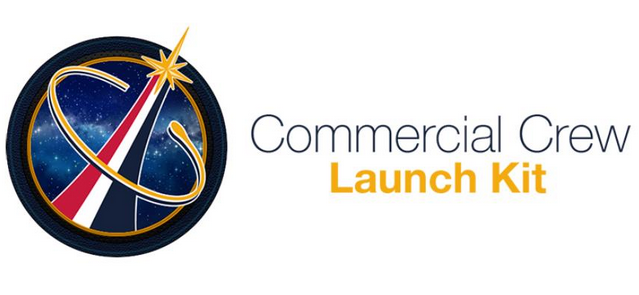Middle School High School | Daily Do
How Can We Land a Payload Safely?

Aerospace Crosscutting Concepts Disciplinary Core Ideas Engineering Is Lesson Plan NGSS Phenomena Physical Science STEM Three-Dimensional Learning Middle School High School Grades 6-8 Grades 9-12
Welcome to NSTA's Daily Do
Teachers and families across the country are facing a new reality of providing opportunities for students to do science through distance and home learning. The Daily Do is one of the ways NSTA is supporting teachers and families with this endeavor. Each weekday, NSTA will share a sensemaking task teachers and families can use to engage their students in authentic, relevant science learning. We encourage families to make time for family science learning (science is a social process!) and are dedicated to helping students and their families find balance between learning science and the day-to-day responsibilities they have to stay healthy and safe.
Interested in learning about other ways NSTA is supporting teachers and families? Visit the NSTA homepage.
What Is Sensemaking?
Sensemaking is actively trying to figure out how the world works (science) or how to design solutions to problems (engineering). Students do science and engineering through the science and engineering practices. Engaging in these practices necessitates that students be part of a learning community to be able to share ideas, evaluate competing ideas, give and receive critique, and reach consensus. Whether this community of learners is made up of classmates or family members, students and adults build and refine science and engineering knowledge together.
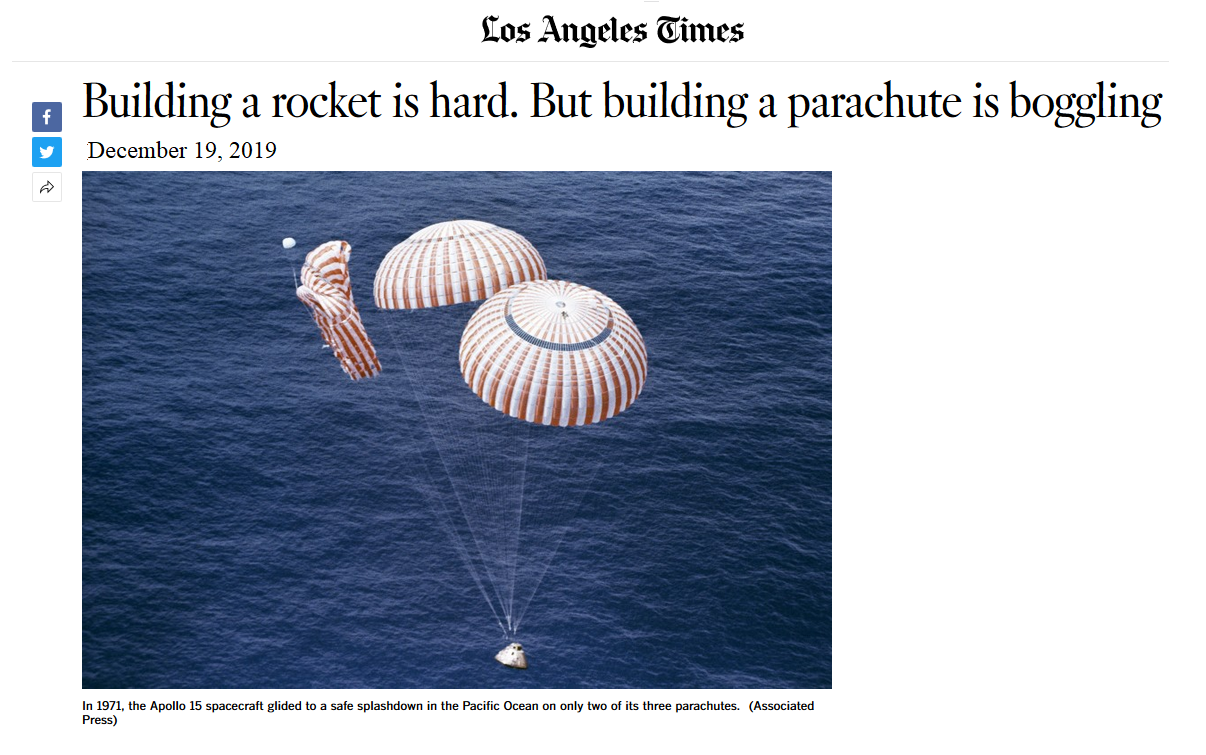
Introduction
Today's task, How can we land a payload safely?, is a revised-for-engineering-in-the-science-classroom version of the classic "Egg Drop" challenge. This task highlights building authentic contexts around engineering design challenges to help students see a connection between what they are doing in the classroom and the real world. This challenge couldn't be more relevant: five days ago (after years of work), SpaceX shared a parachute design that meets all of the mission criteria necessary to bring astronauts home safely from the International Space Station! As NASA turns to outside engineers for help, students have a real opportunity to contribute to the science and engineering needed to make NASA missions a reality.
How Can We Design a Parachute That Will Safely Land a Payload on Mars?
Share the Los Angeles Times headline (above) "Building a rocket is hard. Building a parachute is boggling." Tell students that designing parachutes for NASA missions is much more difficult than it might sound. Parachute designs that meet mission criteria result from knowledge and experience engineers gain from failed designs.
Tell students that NASA now tasks contractors (non-NASA businesses and people) to design parachutes that meet criteria for specific missions. One of these missions involves landing a spacecraft on Mars. The problem that engineers face is how to use a parachute to safely land the craft (payload) on the surface.
Ask students to create a T-chart and record noticings on the left side and wonderings on the right side. Show students the Mars 2020 Supersonic Parachute Test Flight Test #1 video.
Say, "We are going to use the engineering design process to design a parachute that will safely land a payload on the surface of Mars. What questions do you have?" Students might ask these questions:
- What materials are we using?
- How big does it have to be?
- What is the payload?
- How much time do we have?
- Can the payload have a cushion?
Record all questions. Use the talk move, "Can you say a little more about that?" if students' questions are unclear or too general.
Create a class T-chart, labeling one side criteria and the other side constraints. Read student questions one at a time. For each question, write the answer in the appropriate column. (Know the criteria and constrains that you want to make sure end up on the list before building this chart. You can make additions based on student questions.) If the question doesn't address a criterion or constraint, circle it, and tell students, "We'll check back throughout this design challenge to see if we are able to answer this question."
Below is an example of criteria and constraints you and your students might come up with. Black text indicates criteria and constraints from the NASA Eggstonaut Parachute Challenge.
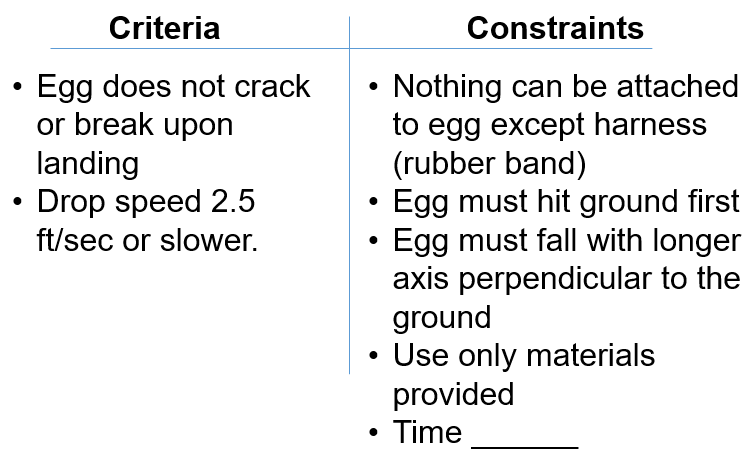
Materials (per group)
- string (fishing line, beading wire, strong thread, and yarn will also work);
- plastic (Use whatever you have in large quantity, like garbage bags, plastic sheeting, or grocery bags. Make sure all students can use the same material for canopies.);
- plastic eggs (If plastic eggs are not available, use large binder clips until the final test, when you might choose to use a real egg.);
- dried beans or pennies for weight (if using plastic eggs for payload);
- ruler or yardstick (meter stick);
- scissors;
- cellophane tape or masking tape;
- stopwatch (digital timer);
- graph paper (or a graphing program like Excel or Google Sheets);
- How can we land a payload safely? model scaffold;
- mass balance 0.01 grams (optional); and
- tablet, phone, camera with video capabilities (optional).
Note: The image at right shows students using a meter stick to mark the radius length repeatedly to create a canopy cut-out line.

Engineering Design Process
Ask Phase of the Engineering Design Process (continued)
Tell students, "We need to figure out how parachutes work here on Earth before designing parachutes for Mars, so we need to stay in the 'Ask' phase before we can Imagine designs that will meet the criteria for success."
Share with students that a payload-canopy system consists of three parts: the payload, suspension lines, and canopy.
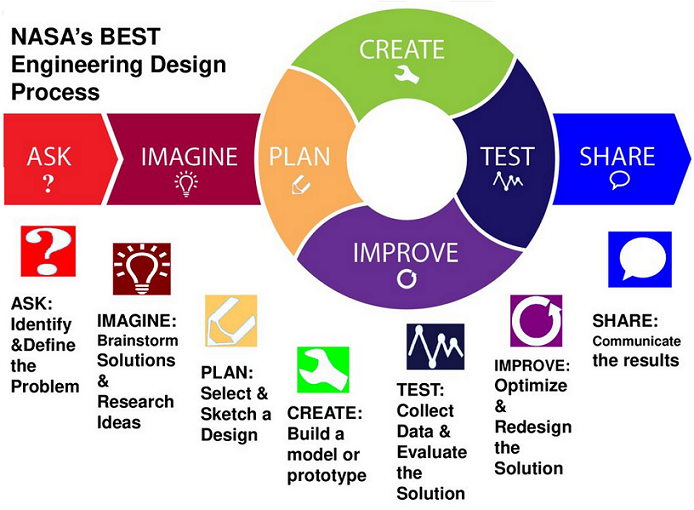
Assign students to groups of three (classmates or family members). Give students an opportunity to look at a 14-inch piece of string. Say, "I would like each group to choose four canopy sizes to test. The radius of canopies you test must be between 4 inches and 12 inches. We want to see what we can figure out without wasting material."
Then say, "We will likely test a lot of different sizes of canopies among our groups. What do we need to keep constant among our groups to be able to compare our results?" Students might say the following:
- Number of suspension lines (You might allow students to decide how many suspension lines to use, or suggest four so materials are not wasted.);
- Weight of payload (You might decide on a certain number of pennies/dried beans to use, or choose a weight if mass balances are available);
- Canopy material; and
- Shape of canopy.
Once the class has decided on what the parachutes will all have in common, ask, "What data do we need to collect?" Students might say "how long it takes for the parachute to drop," and some might add, "observe the way the parachute falls." Ask, "How will we determine when the parachute has landed?" (Payload hits ground.) "What does this mean for how we drop the parachute?" (Payload has to be at the same height every time.)
Note: Parachutes should be dropped from a minimum of seven feet to ensure the canopy opens.
Allow students to choose their four canopy heights, then build and test their parachutes. Student data tables should include places to record drop time, mass (if a mass balance is available), and observations of the falling parachute. You may choose to have students video record the fall of their parachutes. Watching in slow motion may yield observations that help students explain how parachutes work.
Ask students to graph their drop-time data (canopy radius vs. drop time). You might choose to have students calculate velocity and graph that instead. If students have mass data, ask them to create a second graph, mass (g) v. drop time. What you want students to observe with the graphs is that there is a failure point, a point at which drop speed changes from increasing to decreasing as their canopy size continues to increase. Graphing mass v. drop time offers an opportunity for students to notice that as the mass (or weight) of the parachute increases, the drop speed decreases until the failure point. This may be surprising to students (and create an opportunity for you to help students develop knowledge and skills to determine correlation from causation).
Ask students to calculate the ratio of canopy radius to suspension line length for their slowest parachute, then have groups compare their ratios. Are the ratios similar? Could the ratio be used to predict how well a design might perform?
Creating Models to Explain How Parachutes Work
Share the model scaffold with students. Ask students to independently (Alone Zone) create a model that explains how a parachute works.
If students have a difficult time starting their models, ask, "What absolutely has to be in the model (components) to explain how the parachute works? (parachute, payload, suspension lines, air) How might you show the interaction between these (point to two) components? (arrows, lines, words)" As you move around the room, ask students, "What does that line represent? (for example, gravity) How might you show the difference between the size of the force (pull) gravity and the size of force (push) of the air?" Or ask, "How could you use forces to represent that the parachute at the failure point is moving faster than your slowest parachute?"
Ask students to share their models with the group. You might choose to have one students explain their model to the group while the other group members note similarities and differences between the sharer's model and their own. Students can use the sentence starter, "One thing that is similar/different between your model and my model is...." Give students time to revise their models after everyone in the group has had at least one turn to share a similarity and a difference.
You might choose to create a class consensus model before moving on. Ask each group to share one similarity among most of their models until all the groups have shared. Then ask if the groups noticed any other similarities among their models. Ask the class if they are in agreement with each part or interaction you add to the model. If they are not in agreement, ask them if it is okay to put a question mark on that part of the model.
Brainstorm Phase of Engineering Design Process
Now that students are thinking about how the forces acting on a parachute can be used to explain how a parachute works and they understand how a ratio might help them predict how well a parachute might perform, ask students to individually (Alone Zone) brainstorm two parachute designs that would create the slowest drop speed. As you walk around the room, ask students to share why they have made the design choices they have chosen. Listen for them to share ideas about maximizing canopy size without reaching the failure point or using new materials that will not allow air to flow through (thicker, resistant to tearing) to increase the upward air force on the canopy.
Navigate the students through the rest of the engineering design process. What is the slowest parachute drop speed the class can achieve?
Supersonic Parachute in the News
You might share the article (or a version adapted for classroom use) "Building a rocket is hard. Building a parachute is boggling" with students. This article, published by the Los Angeles Times on December 19, 2020, chronicles the difficulty—and design failures—engineers have experienced designing parachutes for space missions. You may consider asking students to read this article to identify trade-offs engineers have made when designing parachutes to meet criteria for different NASA missions. What made the trade-off necessary? What was gained in the trade-off? What was lost?
On May 1, 2020, SpaceX completed the 27th and final test of a parachute designed to ensure astronauts traveling to the International Space Station can make it safely back home. Read the whole story, "SpaceX aces final parachute test ahead of historic May 27 crew launch ,"on Space.com.
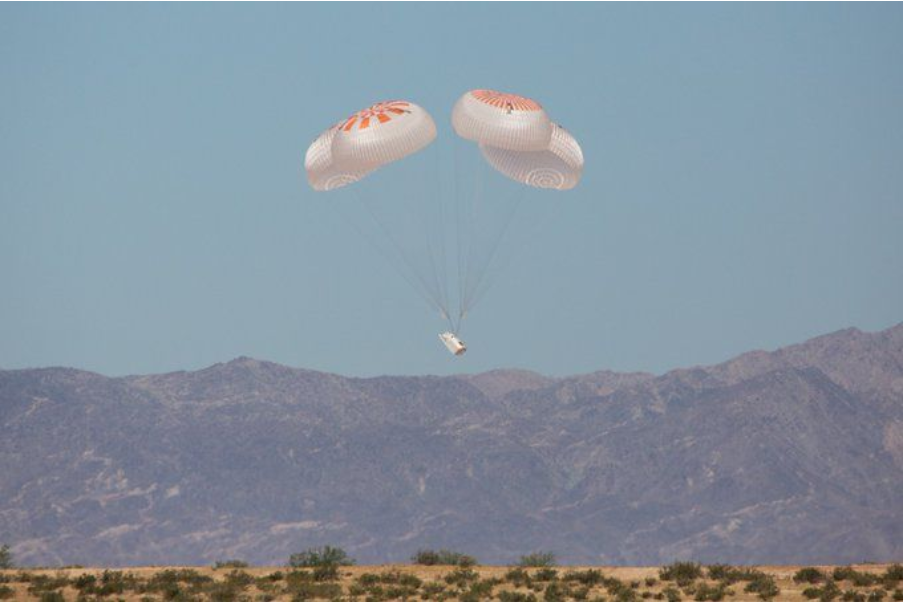
NSTA Collection of Resources for Today's Daily Do
NSTA has created a How can we land a payload safely? collection of resources to support teachers and families using this task. If you're an NSTA member, you can add this collection to your library by clicking Add to My Library, located near the top of the page (at right in the blue box).
Check Out Previous Daily Dos From NSTA
The NSTA Daily Do is an open educational resource (OER) and can be used by educators and families providing students distance and home science learning. Access the entire collection of NSTA Daily Dos.
Acknowledgments
This Daily Do is adapted from the new NASA Next Gen STEM Launch Kit: Eggstronaut Parachute Challenge. Check out additional NASA Next Gen STEM Launch Kit activities (see right sidebar for a list of activities).
